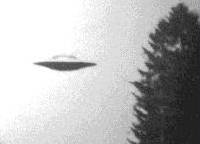Article/Document:
Unique UFO Archive Hidden in Warehouse (APRO Archives and Files)
Clas Svahn
original source | fair use notice
Summary: One of the biggest UFO archives in the world is tucked away in Scottsdale, Arizona, USA. There were approximately 15.000 UFO cases contained in the archive for the once influential UFO organization APRO. But no one is allowed to have a peek. Here is the story of how this historical material went adrift.
One of the biggest UFO archives in the world is tucked away in Scottsdale, Arizona, USA. There were approximately 15.000 UFO cases contained in the archive for the once influential UFO organization APRO. But no one is allowed to have a peek. Here is the story of how this historical material went adrift.
-------------------------
One of the best American UFO archives, besides the archive held by the UFO organisation Centre for UFO Studies (CUFOS), is the archive that was managed by APRO (Aerial Phenomena Research Organisation). It was founded in 1952 by the husband and wife team of Jim and Coral Lorenzen. The pair also published several books on the subject and maintained connections around the globe, especially in South America. The Swedish ufologist and author, Gösta Rehn, was one of many who supplied APRO with material.
For years, the archive was getting larger and larger, containing witness reports and photographs, as well as original correspondence from ufologists around the world. The archives were located in Tucson, Arizona, where the Lorenzens lived for many years. When astronomer and ufologist Allen Hynek moved to Scottsdale, Arizona in 1984, he did so partly on the promises of two enthusiasts, Brian Myers and Tina Choate. They helped Hynek get in touch with a millionaire interested in the UFO phenomenon. With a modest amount of funding, Hynek, Myers and Choate opened a small office. Shortly afterwards, however, Hynek decided his partners couldn't be trusted and severed all connection with them. About that same time, Hynek fell ill and, suffering the effects of a brain tumour, died in 1986.
After Hynek's death, Myers and Choate continued the management of the office, now renamed the International Center for UFO Research (ICUFOR). Then Coral Lorenzen, too, died in 1988. The APRO board lacked management skills and found themselves with a very extensive UFO archive that they had no interest in mantaining. - The board wasn't accustomed to acting autonomously, but instead doing what the Lorenzens told them to, Mark Rodeghier explains, president of the Center for UFO Studies in Chicago. But because there were no instructions left in Coral?s will (and APRO was an independent organization, in any case), the decision on what to do with the archive remained with the board.
- They could not hand the archive over to MUFON, since Coral had hated MUFON because its president, Walt Andrus, a former member of APRO, had broken away to start up his own organisation. But there was also CUFOS. And we were interested. We started a collection with the aim of purchasing the archive (as we did with the NICAP archive), when something unexpected happened. Someone spoke to Larry Lorenzen, Coral and Jim's son, and convinced him that the files should not go to CUFOS, either. - Hence Larry contacted the board of APRO and advised them not to hand the material over to us. He also expressed the opinion that the archive should stay in Arizona. The tragedy is that Coral surely would have said yes and allowed CUFOS to purchase the archive if had she been alive. Whoever spoke to Larry Lorenzen did so for malicious reasons.
That's when Brian Myers and Tina Choate reappeared. They not only lived at the time in Scottsdale, outside Phoenix, Arizona; they had also collaborated with Allen Hynek. The board of APRO had no knowledge of Hynek's breakup with the pair. - When Myers and Choate received news that the board didn't know what to do with the archive, they contacted and explained to the board that they were willing to take it off their hands. The board happily accepted and gave it all away for free. All that Myers and Choate had to do was to drive down there and get it, Rodeghier tells us. Other sources, however, states that Myers and Choate payed 6.000 dollars for the files that consists of at least 18 filing cabinets of which at least twelve are case files. According to Mark Rodeghier it must have contained at least 15.000 sighting reports, many duplicated nowhere else.
- Although ICUFOR had a small office, most of the archive was kept for many years in Myers and Choates? garage. I personally visited them in 1991, but was not even allowed to see the material. No one, to my knowledge, has been allowed to see it since it ended up with the pair. All I've been able to extract are a few copies of cases, such as the Trindade case. Fortunately, several thousand early cases have been documented on microfilm, but the majority of the cases are not available to ufologists. Nowadays Brian Myers and Tina Choate live in Scottsdale. They have on several occasions been offered money for the APRO archive, but have refused every offer made. One of the few people who have been able to visit the archive is the famous abductee Travis Walton. - It's a tragedy, Mark Rodeghier says. Ufologists interested in research and history all around the world could benefit from having access to the archive. In its present state, it is of no use. It's all very sad.
Read more articles on this topic:






